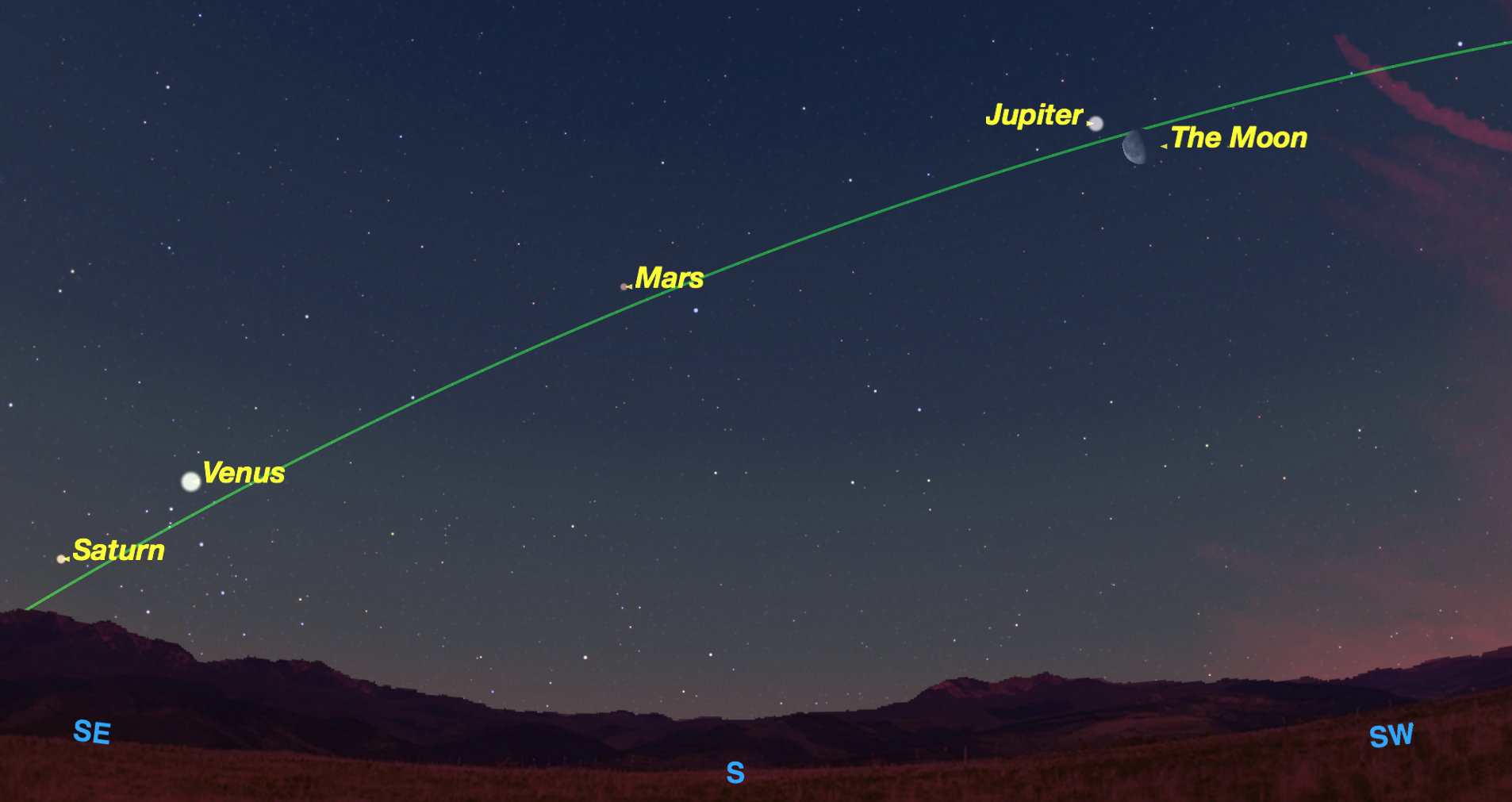Bright Planets, Moon, Put on New Year's Show

Early risers this week will be treated to a spectacular display by the moon and the four brightest planets in the sky, in a fitting celestial welcome to the new year.
Weather permitting, the planets Jupiter, Mars, Venus and Saturn will be visible stretching across the dawn sky right along the ecliptic (the invisible line that the sun follows across the sky).
The ecliptic is something of an illusion, since the sun does not really move along it. Instead, the Earth moves in its orbit around the sun, and observers note that the stars appear to move behind the sun. The moon also closely follows the path of the ecliptic, but ranges above and below it because the moon’s orbit is tilted 5 degrees to the plane of the ecliptic. [101 Best Night Sky Photos of 2015]
On New Year's Eve (Thursday, Dec. 31), the moon is slightly south of the ecliptic while Jupiter is slightly north of the ecliptic, so the moon passes 1.5 degrees below Jupiter. Three days later, on the morning of Sunday, Jan. 3, the moon is slightly above the ecliptic and passes 1.5 degrees north of Mars, which is also north of the ecliptic.
Three days after that, on the morning of Wednesday, Jan. 6, the shrinking crescent moon is approaching Venus and Saturn. A day later, and it has passed them, but still forms a very close grouping with the two planets.
On the morning of Jan. 9, Venus and Saturn will be particularly close, and will fit within the field of a small telescope.
Because the solstice has only just passed, in the Northern Hemisphere dawn still comes quite late in the morning, so many people will be up and about while the sky is still dark enough to observe these interesting conjunctions between the moon and these four planets. This will be a good way to ring in the new year, which will be filled with many interesting events for skywatchers.
Get the Space.com Newsletter
Breaking space news, the latest updates on rocket launches, skywatching events and more!
Good planet hunting and Happy New Year!
Editor's note: If you snap an awesome photo of the planets, or any other night sky view, and you'd like to share it with us and our news partners, send images and comments in to managing editor Tariq Malik at: spacephotos@space.com.
This article was provided by Simulation Curriculum, the leader in space science curriculum solutions and the makers of Starry Night and SkySafari. Follow Starry Night on Twitter @StarryNightEdu. Follow us @Spacedotcom, Facebook and Google+. Original article on Space.com.
Join our Space Forums to keep talking space on the latest missions, night sky and more! And if you have a news tip, correction or comment, let us know at: community@space.com.

Geoff Gaherty was Space.com's Night Sky columnist and in partnership with Starry Night software and a dedicated amateur astronomer who sought to share the wonders of the night sky with the world. Based in Canada, Geoff studied mathematics and physics at McGill University and earned a Ph.D. in anthropology from the University of Toronto, all while pursuing a passion for the night sky and serving as an astronomy communicator. He credited a partial solar eclipse observed in 1946 (at age 5) and his 1957 sighting of the Comet Arend-Roland as a teenager for sparking his interest in amateur astronomy. In 2008, Geoff won the Chant Medal from the Royal Astronomical Society of Canada, an award given to a Canadian amateur astronomer in recognition of their lifetime achievements. Sadly, Geoff passed away July 7, 2016 due to complications from a kidney transplant, but his legacy continues at Starry Night.










